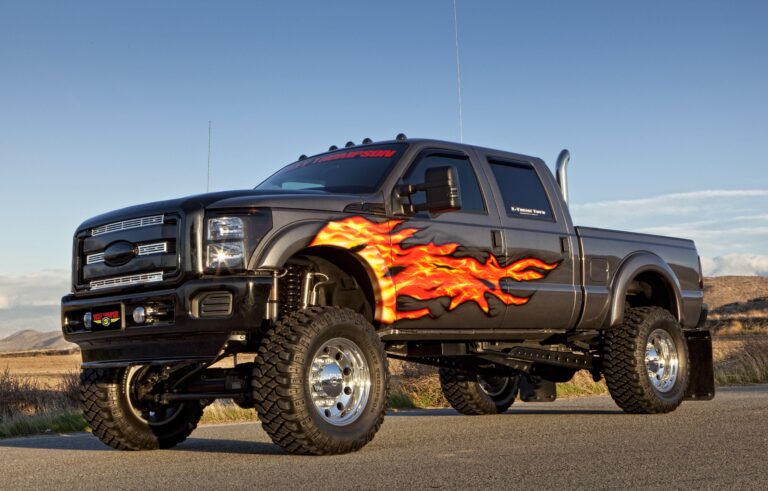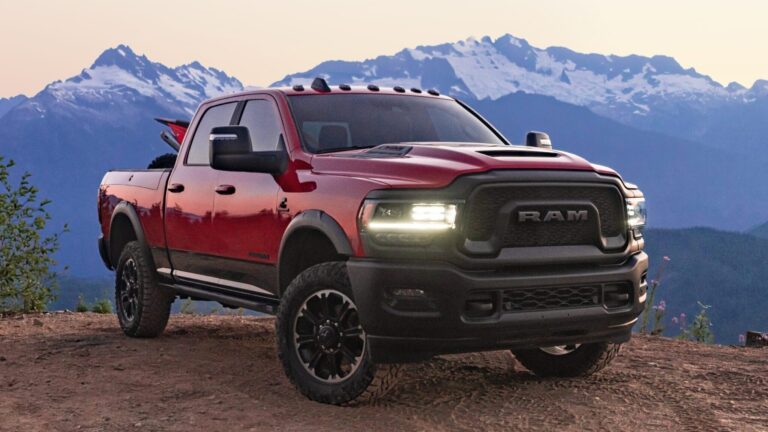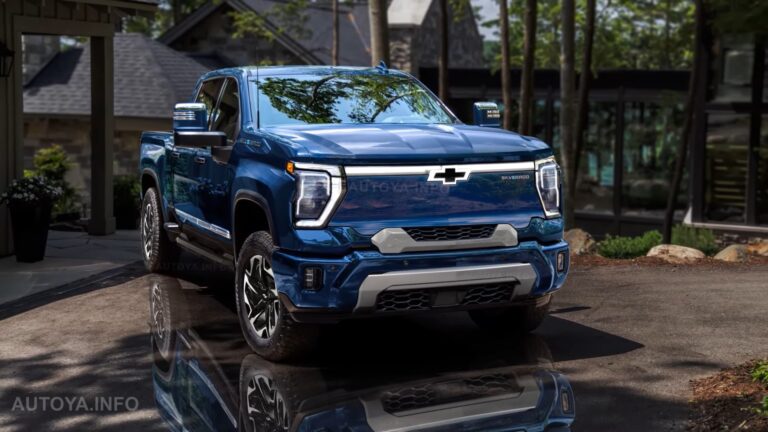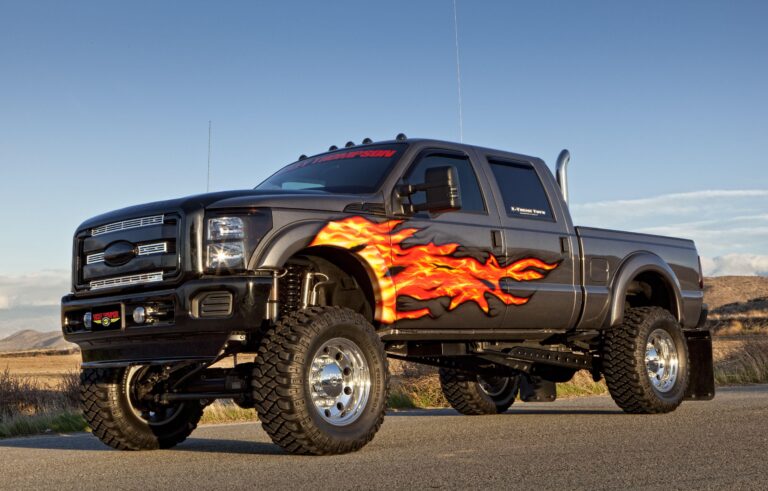Is A Tonneau Cover From A Sierra Compatible With A Sierra?
Is A Tonneau Cover From A Sierra Compatible With A Sierra? cars.truckstrend.com
The question of whether a tonneau cover from one GMC Sierra can be seamlessly transferred to another Sierra is a common one among truck owners. Whether you’re upgrading your truck, looking to save money by buying a used cover, or simply curious about interchangeability, understanding tonneau cover compatibility is crucial. It’s not as simple as "yes" or "no"; rather, it’s a nuanced topic dependent on several critical factors, primarily the specific year models and their corresponding truck bed dimensions. This comprehensive guide will delve into the intricacies of Sierra tonneau cover compatibility, helping you make an informed decision.
Understanding Tonneau Cover Compatibility Basics
Is A Tonneau Cover From A Sierra Compatible With A Sierra?
At its core, tonneau cover compatibility hinges on the precise dimensions and design of the truck bed. A tonneau cover is custom-fitted to sit snugly on the bed rails, providing protection, improving aerodynamics, and enhancing the truck’s aesthetic. Therefore, any significant deviation in bed length, width, or even the design of the bed rails themselves can render a cover incompatible.
The GMC Sierra, like its sibling the Chevrolet Silverado, has undergone several design iterations and generation changes over the years. Each new generation often brings subtle, yet critical, modifications to the truck bed. These changes are the primary reason why a tonneau cover from, say, a 2010 Sierra might not fit a 2020 Sierra, even if both are "Sierra" models.
The Critical Role of Truck Bed Dimensions
The most significant factor determining tonneau cover compatibility is the truck bed’s dimensions. These include:
- Bed Length: This is paramount. Sierras are typically available with short beds (approx. 5’8" to 5’9"), standard beds (approx. 6’6"), and long beds (approx. 8′). A cover designed for a short bed will never fit a standard or long bed, and vice versa. Even minor differences of an inch or two between generations can make a cover incompatible.
- Bed Width: While generally more consistent across generations for a given bed length, variations in the width between the bed rails can occur. This is particularly important for hard covers and retractable covers that require precise alignment.
- Bed Rail Design: Modern trucks often feature integrated rail caps, utility tracks (like GMC’s CarbonPro bed or certain cargo management systems), or specific tie-down points that can interfere with the tonneau cover’s mounting clamps or rails. Some covers sit "over-the-rail," while others fit "inside-the-rail," and this design choice impacts compatibility with certain bed accessories.

Always remember: a tonneau cover is a precision-fit accessory. Small differences can lead to poor sealing, compromised security, or an inability to install the cover at all.
GMC Sierra Generations and Their Impact on Compatibility
GMC Sierra trucks have evolved through distinct generations, each potentially featuring unique bed dimensions and designs. Understanding these generations is key to assessing compatibility:
- GMT400 (1988-1998): Older models with different bed designs.
- GMT800 (1999-2006/2007 Classic): Significant changes from the GMT400. Bed dimensions became more standardized within this generation.
- GMT900 (2007-2013): Another major redesign. While similar to GMT800 in some aspects, subtle changes in bed rail profiles and overall dimensions can affect fit.
- K2XX (2014-2018): Introduced new styling and slight adjustments to bed dimensions and rail designs.
- T1XX (2019-Present): The latest generation brought notable changes, including new bed designs (like the MultiPro tailgate and optional CarbonPro bed), which can significantly impact tonneau cover fitment, especially for covers designed for previous generations.


A tonneau cover designed for a K2XX generation Sierra will generally not fit a T1XX generation Sierra, and vice-versa, even if they share the same bed length (e.g., both are short beds). The differences in rail design, stake pocket locations, and overall bed geometry are too substantial.
Factors Beyond Bed Size: Cab Style and Special Editions
While bed dimensions are the primary concern, other factors occasionally arise:
- Cab Style (Regular, Extended, Crew Cab): While the cab style itself doesn’t directly affect tonneau cover fit (as the cover only interacts with the bed), it indirectly influences the available bed lengths. For instance, crew cab Sierras typically only come with short or standard beds, whereas regular cab models often offer long beds. So, if you’re comparing a cover from a regular cab long bed to a crew cab short bed, the difference isn’t the cab, but the vastly different bed lengths.
- Special Editions (Denali, AT4, SLT, etc.): Generally, special trims like Denali or AT4 do not have unique bed dimensions that would affect tonneau cover compatibility. The bed structure remains the same as standard models for that generation. However, it’s always wise to double-check if any factory-installed bed liners or cargo management systems on these trims might interfere with specific cover types (e.g., inside-the-rail versus over-the-rail designs). The CarbonPro bed, introduced in the T1XX generation, does have unique rail designs and may require specific covers or mounting hardware.
Types of Tonneau Covers and Their Fit Flexibility
Different types of tonneau covers offer varying degrees of fit flexibility:
- Soft Roll-Up/Folding Covers: These tend to be slightly more forgiving with minor dimension discrepancies due to their flexible nature. However, a significant mismatch will still result in a poor seal or inability to install.
- Hard Folding Covers: These are less forgiving than soft covers, requiring more precise bed dimensions for proper folding and sealing.
- Retractable Covers: These are the least flexible. Their canister and rail systems demand exact bed dimensions for smooth operation and secure fitment. Even a slight difference can prevent installation or cause operational issues.
- Hinged/One-Piece Covers: These are also highly rigid and require exact bed dimensions for proper alignment and latching.
Generally, the more rigid and complex the tonneau cover, the less adaptable it will be to even minor bed dimension changes between truck generations.
Practical Steps to Determine Compatibility
Before investing in a tonneau cover, follow these crucial steps to ensure compatibility:
-
Measure Your Truck Bed Precisely:
- Length: Measure from the bulkhead (front of the bed, nearest the cab) to the inside of the tailgate. Measure along the top rail.
- Width: Measure the width between the inside of the bed rails at the front, middle, and rear of the bed.
- Depth: Measure from the top of the bed rail down to the bed floor, particularly if considering over-the-rail covers or those with large canisters.
- Also, note the year, make, model, and cab style of your Sierra.
-
Check the Tonneau Cover’s Specifications:
- If buying new, manufacturers provide detailed fitment guides on their websites. Use their "Shop by Vehicle" tool.
- If buying used, ask the seller for the exact year, make, and model of the truck the cover came from, along with its bed length. If possible, get the tonneau cover’s part number or manufacturer/model name. Then, cross-reference this information with the manufacturer’s fitment guide.
-
Consult Manufacturer-Specific Fitment Guides: This is the most reliable method. Tonneau cover manufacturers rigorously test their products for specific vehicle applications. Rely on their data over general assumptions.
-
Consider the Used Market with Caution: While a used cover can save money, the risk of incompatibility is higher. Always verify the source truck’s exact specifications and, if possible, physically test fit the cover before purchase. Be wary of sellers claiming a cover is "universal" or "should fit most Sierras."
Potential Challenges and Solutions
Even with careful planning, challenges can arise:
- Minor Dimension Discrepancies: A cover might be off by an inch or two. Solutions are limited: for soft covers, you might get away with it but risk poor sealing. For hard covers, it’s usually a no-go. Adapter kits for significant dimension changes are rare.
- Interference with Bed Accessories: Factory bed liners, cargo management systems (e.g., GMC’s CarbonPro bed), or aftermarket rail accessories can interfere with tonneau cover clamps or rails. Always check for specific compatibility notes from the cover manufacturer.
- Pre-Drilled Holes Not Aligning: Some tonneau covers require drilling into the bed rails or utilizing existing stake pockets. If the locations don’t match, new drilling might be required (if feasible and desired), or the cover simply won’t fit.
- Solutions:
- Precision Measurement & Research: The best solution is prevention through thorough research.
- Professional Installation Advice: If you’re unsure, consult a professional truck accessory installer. They often have experience with various covers and truck models.
- Sell & Buy New: If a used cover proves incompatible, the most practical solution is often to sell it and purchase a new one specifically designed for your truck.
Practical Advice and Actionable Insights
- Measure Twice, Buy Once: This adage is particularly true for tonneau covers. Take precise measurements of your truck bed.
- Always Verify with the Manufacturer: Do not rely on assumptions. Check the tonneau cover manufacturer’s official fitment guide for your exact year, make, model, and bed length.
- Beware of "Universal" Claims: While some accessories might be universal, a tonneau cover is typically a vehicle-specific fitment.
- Consider Resale Value: A perfectly fitting, high-quality tonneau cover adds significant value and functionality to your truck. Don’t compromise on fit for a perceived small saving.
Tonneau Cover Compatibility & Associated Costs
When considering tonneau cover compatibility, it’s helpful to understand the potential costs involved, whether for purchasing, installing, or dealing with incompatibility.
| Item/Service | Description | Estimated Cost Range |
|---|---|---|
| New Tonneau Cover (Perfect Fit) | Purchase of a brand-new tonneau cover explicitly designed for your specific GMC Sierra year, model, and bed length. Prices vary greatly by type (soft roll-up vs. hard retractable). | $250 – $2,500+ |
| Used Tonneau Cover (Perfect Fit) | Purchase of a pre-owned tonneau cover that matches your Sierra’s specifications. Savings can be significant, but careful verification is essential. Condition and age will affect price. | $100 – $1,000 |
| Professional Installation | Labor cost if you opt to have a professional shop install your tonneau cover. While many are DIY-friendly, complex retractable covers or those requiring minor adjustments might benefit from professional help. | $75 – $250 |
| Tonneau Cover Adapter/Accessory Kits | Small kits (e.g., for specific bed rail systems like RamBox or CarbonPro) or replacement clamps/hardware. True "adapter kits" to bridge major generational differences in bed dimensions are rare and often non-existent. | $20 – $150 |
| Minor Fabrication/Modification | If a cover is almost compatible and requires slight drilling, shimming, or trimming (usually for soft covers or minor rail interference). This often involves DIY time and basic tools, or a custom shop fee for more complex work. Caution: Major modifications are not recommended for expensive hard or retractable covers. | $0 (DIY) – $300+ |
| Shipping Costs (Online Purchases) | For new or used covers purchased online, shipping can be a significant added cost, especially for large, heavy hard covers. | $50 – $200+ |
| Resale Value Loss (Incompatible Cover) | If you purchase an incompatible used cover, you might lose money on its resale. The "cost" here is the difference between what you paid and what you can recover by selling it to someone else whose truck it does fit. | Varies |
| Time/Effort (Research & Installation) | While not a direct monetary cost, the time spent researching, measuring, potentially attempting installation, and troubleshooting an incompatible cover can be substantial. | Immeasurable |
Frequently Asked Questions (FAQ)
Q1: Can I use a tonneau cover from a Chevrolet Silverado on my GMC Sierra?
A1: Often, yes! For any given generation, the GMC Sierra and Chevrolet Silverado typically share the same truck bed dimensions. So, a tonneau cover from a 2017 Silverado short bed will likely fit a 2017 Sierra short bed. However, always verify the specific year, bed length, and any special bed features (e.g., MultiPro/Multi-Flex tailgate compatibility) to be absolutely sure.
Q2: Will a long bed tonneau cover fit a standard or short bed Sierra?
A2: No, absolutely not. Tonneau covers are designed for specific bed lengths. A cover for an 8-foot long bed will be far too long for a 6.5-foot standard bed or a 5.8-foot short bed.
Q3: Are all hard folding or retractable covers universal for Sierras of the same bed length?
A3: No. Even if two Sierras have the same bed length (e.g., both 5.8-foot short beds), if they are from different generations (e.g., a 2018 vs. a 2020), the subtle changes in bed rail design, width, and mounting points will likely make the covers incompatible.
Q4: What if my Sierra has a factory bed liner or a cargo management system?
A4: Most factory drop-in or spray-in bed liners are compatible with tonneau covers, as covers typically mount to the top of the bed rails. However, integrated rail systems (like GM’s Cargo Management System) or specific bed features (like the CarbonPro bed or the MultiPro/Multi-Flex tailgate) might require specific tonneau cover models or adapter kits. Always check the tonneau cover manufacturer’s fitment notes for these specific features.
Q5: Where can I find my Sierra’s exact bed dimensions?
A5: You can find your truck’s bed dimensions in your owner’s manual, on the official GMC website under your specific model year’s specifications, or by simply measuring it yourself with a tape measure (as described in the "Practical Steps" section).
Q6: Is it worth trying to modify a non-compatible tonneau cover to fit?
A6: For minor issues with soft covers, very light modifications (like shimming or minor trimming) might be possible. However, for hard folding or retractable covers, significant modifications are generally not recommended. They are precision-engineered, and altering them can compromise their functionality, security, weather resistance, and potentially void warranties. It’s usually more cost-effective and less frustrating to sell the incompatible cover and purchase one that fits properly.
Conclusion
The question of whether a tonneau cover from one GMC Sierra is compatible with another Sierra boils down to one primary principle: precision fitment based on specific truck bed dimensions and design, which vary significantly across different model years and generations. While the "Sierra" name remains consistent, the underlying truck platform and bed characteristics evolve.
Therefore, simply owning a "Sierra" isn’t enough to guarantee compatibility. Thorough research, precise measurements of your truck bed, and diligent cross-referencing with tonneau cover manufacturer fitment guides are indispensable steps. While buying a used cover can offer savings, the risk of incompatibility is higher, necessitating even greater scrutiny. Ultimately, investing the time upfront to ensure a perfect fit will save you money, frustration, and ensure your tonneau cover provides the protection, functionality, and aesthetic appeal you desire for your GMC Sierra.






